From enabling passengers to embark and disembark trains, to vertebra-crushing shoes, and operating systems like Microsoft Windows, “platform” has been used to describe many different things, in many different contexts, over a long period of time.
Lately, its meaning has become even more complicated and diluted.
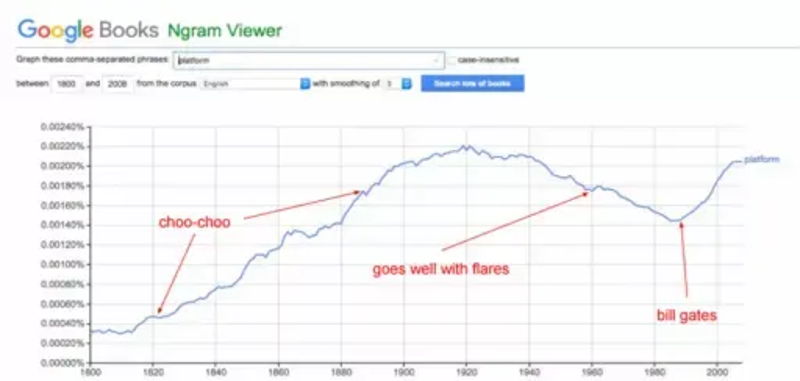
Technology companies — particularly SaaS startups — are using “platform” to describe website builders, CRM solutions, To-Do list apps and everything in between, even when “tools” or “browser programs” are more accurate ways to describe what they're building.
Try a Google News search for “techcrunch.com platform”. Are there really over 50,000 true platforms in the world? By true, I mean companies comparable to Facebook, Google, Amazon, Airbnb, Uber, and Microsoft. Drop two zeros, and we're getting closer to a realistic number.
Most startups are really building a product - a tool - not a platform.
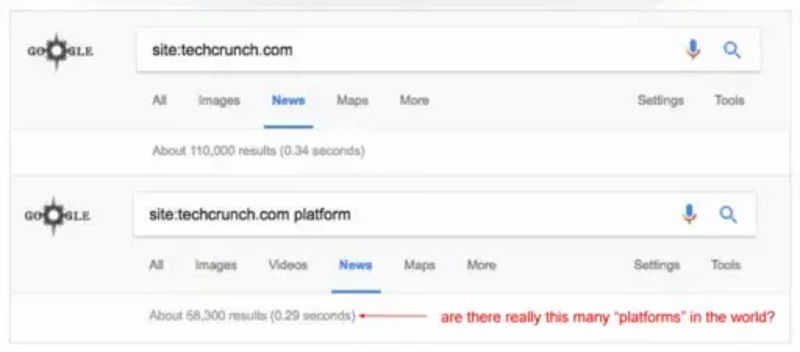
“Platform” is being misused for one reason, and one reason only: funding. Think about it — you're more likely to gain more column inches and funding by aspirationally comparing your SaaS startup with Microsoft Windows vs comparing it with Microsoft Encarta.
One is a single use product, the other is a micro-economy. Bill Gates and Mark Zuckerberg aren't just product builders, they're economy builders.
What platforms really are
A “true” platform in the technology or economic sense is more accurately called a “multi-sided platform.” Microsoft Windows, Google Android, Apple iOS, Facebook, Uber, and WeChat are all multi-sided platforms. Whilst they may sound complicated and modern, multi-sided platforms are thousands of years old and easy to understand. Here’s some familiar examples.
A platform creates a foundational structure that supports various interactions and transactions, facilitating growth and integration.
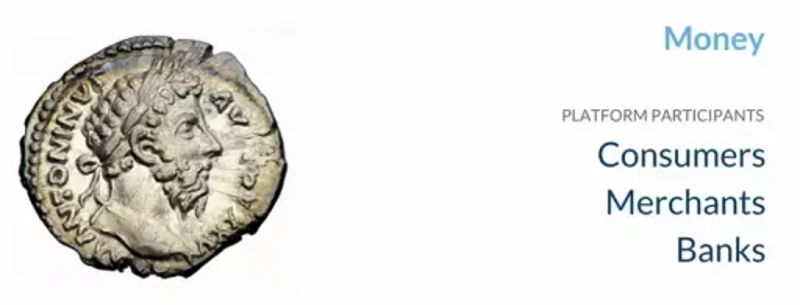
Arguably the world’s oldest platform, money has helped consumers (buyers), merchants (sellers), and banks exchange value across the world for thousands of years. William Stanley Jevons once described money as having four functions: a medium of exchange, a common measure of value, a standard of value, and a store of value.
Money makes it efficient for merchants to trade with each other, consumers to trade with merchants, and consumers to trade with each other. We store our money in banks and under our beds, using cards and cash as tools to exchange monetary value with each other. Global trade can’t happen without it.

Since the 1920s, television has delivered news of John F. Kennedy’s death across the world in real time, entertained billions in their homes with soap operas and movies, and taken us deep into parts of the world we might never visit through documentaries from presenters like David Attenborough.
It’s a mass telecommunication platform, providing entertainment and educational value for viewers, communication value for advertisers, and distribution value for content creators. In a new age of always-on high speed broadband, companies Netflix continue to evolve the meaning of “television.”
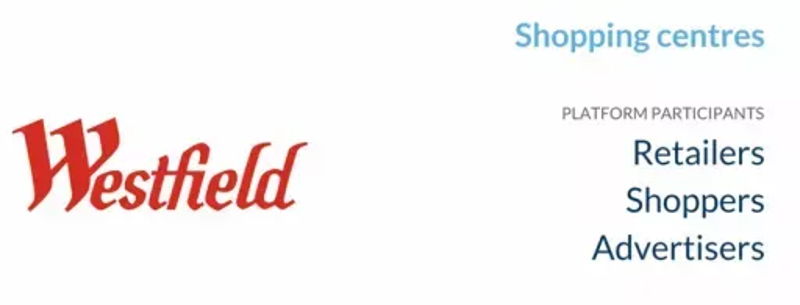
Shopping centres (or shopping malls depending on where you’re from) sprung up in 1950’s America to address the needs of people migrating from inner cities to suburbia. Victor Gruen, architect of the first fully enclosed, climate-controlled shopping center in history referred to early shopping centres as “multifunctional centers”, an antidote to the disconnected stores and services scattered across the “suburban labyrinth”.
Today, shopping centres around the world are a “third place” for billions of people — one central platform for people to connect, transact, and eat.
The intangibility of platforms
As you may have noticed by now, platforms aren’t real, physical things. You can own, touch and feel a £1 coin, but that’s just one component of the platform that is “money”.
When businesses “advertise on television”, can they point to a single physical representation of what they’re advertising “on”? We gaze at television sets, but these sets would be useless in isolation — we need stations, programmes, and satellite dishes to get value from them. All components of the platform that is television.
Whilst they contain physical and virtual components, platforms are intangible. While some software is platform specific, designed to operate on a single platform, the overall concept of a platform remains intangible.
Meta's Platform is intangible. Yes, you can scroll through your Instagram feed on your phone, and read Facebook’s excellent developer documentation, but what you can’t see are the millions of people working for businesses “built on” Meta's platform. These people, the things they design, build, and sell - and the ideas they create - across these multiple platforms are all core components of the overall Meta platform.
Even the technology that contains Facebook platform doesn’t exist in one place — it’s distributed all over the world in Facebook’s data centers, independent apps hosted on Amazon AWS, on billions of mobile phones, in physical locations, and in the browser. Just like an economy or a country, a platform is an idea. And ideas are intangible.
What is a Platform?
Platforms are not “designed” upfront — they evolve organically over time. But every true platform — from shopping centers to technology platforms like Salesforce, Atlassian, Facebook, and Google — all share three common traits.
True platforms serve multiple types of consumers
Compared with products, which typically serve one type of consumer (who typically pays money for the product), many organizations use platforms to serve multiple different types of consumers at once. Each is effectively an operating system in their own right. The volume and type of consumers typically increases as the platform evolves. Uber is a perfect example of this.

Uber connects people who need to be transported from one place to another with other people who can take them there. Through integrations with Uber’s APIs, United Airlines add value to their customers by making it easy to book a ride through the United Airlines app when they land.
The Washington Post supply news to Uber riders through Uber’s app - which acts as a browser - when in transit, increasing distribution for their content, making the Washington Post a popular choice for riders eager to make more use of their travel time.
Brands like Firestone, Valvoline, Stride Health, AT&T and Verizon are partners of Uber, who engage these partners with their driver network in exchange for negotiated group discounts.
Drivers, commuters, insurance companies, fuel suppliers, publishers, and airlines are all consumers of Uber’s platform. These multiple consumer types exhibit different needs, are incentivised differently, and consume the platform in many different ways.
True platforms facilitate efficient value exchange
With a vast array of different platform consumer types to serve, great platforms excel at providing tools and services to facilitate value exchange between these different types of consumers through a variety of platform marketplaces. Platforms often act as a one stop shop, providing all the necessary tools and services in a unified environment.

The Foreign exchange markets facilitate the exchange of currencies — money — in real-time across the globe. Banks, consumers, and businesses can exchange one currency for another through software, in person, and through currency trading floors.
Shopping centres facilitate value exchange between merchants, consumers, and advertisers through a thoughtfully and cleverly designed experience. Most are designed to funnel consumers through pre-defined routes, making it easy for consumers to discover the stores and services they might need, so they can exchange value with merchants quickly and easily.
Telecommunications companies like Sky make it easy for consumers to find the most relevant entertainment, news, and documentary programmes they might need, through personalised discovery tools. Movie studios, content aggregators like Netflix, and cable networks leverage these tools to drive distribution of their content and services. Advertisers leverage these combined audiences in TVs and in the browser to market and sell their products to consumers.
True platforms exhibit shared common standards
Every economy has a set of laws and standards to ensure the participants in the economy can transact fairly, quickly, and easily.

Transacting through the platform of money requires participants to adhere to a common set of standards like The Gold Standard, territories like Europe and the United States, currencies like the Euro, Dollar, and Pound, and concepts like inflation and quantitative easing.
Television holds participants to an ever evolving set of shared common standards. Content producers need to understand various colour systems like NTSC, PAL, and SECAM. They need to understand frame rates and the meaning of telecine. Hardware manufacturers and content distributors need to understand UHF, VHF, DVD, and HDMI — if these standards didn’t exist, interoperability would be non-existent. Software developers play a crucial role in adhering to these shared common standards, ensuring interoperability and efficiency.
Shopping centre merchants need to understand and adhere to a wide variety of local and international trading laws. Commercial lease agreements set out the obligations and requirements of merchants and landlords. Zoning laws set out requirements for access, parking, and transportation — all vital elements to help drive distribution for the products and services being traded through the platform.
Types of Platforms
Platforms come in various forms, each designed to serve specific purposes and cater to different needs. Here are some common types of platforms:
- Software Platform: A software platform is a comprehensive set of software and resources that supports the growth of a business. It connects external tools, teams, data, and processes, creating a cohesive ecosystem that drives efficiency and innovation. Examples include operating systems like Microsoft Windows, browser-like experiences such as ChromeOS and development environments like Java.
- Social Media Platform: Social media platforms are online spaces where users can create and share content, connect with others, and participate in communities. These platforms, such as Facebook, TikTok, and Instagram, have revolutionized how we communicate and share information, providing endless opportunities for social networking and marketing.
- E-commerce Platform: E-commerce platforms enable businesses to create and manage online stores, process transactions, and handle inventory. Platforms like Shopify and WooCommerce provide the other applications needed to build a successful online retail presence through a web browser, making it easier for businesses to reach a global audience.
- Cloud Platform: Cloud platforms offer cloud computing services, including infrastructure, platform, and software as a service. Providers like Amazon Web Services (AWS) and Microsoft Azure deliver scalable and flexible solutions that support a wide range of applications and services.
- Mobile Platform: Mobile platforms provide the tools and services necessary for developing, deploying, and managing mobile applications. Platforms like iOS and Android offer robust ecosystems that support app development, distribution, and monetization, catering to the growing demand for mobile solutions. Most include a mobile browser embedded in the experience.
Understanding Your Target Audience Before Building On Platforms
Understanding your target audience is crucial when building on different platforms. It ensures that your chosen platform meets the needs of your customers, will enhance the user experience, and ultimately drives new distribution, engagement and adoption. Here's some simple steps to help:
- Conduct Market Research: Start by gathering data, including demographics, interests, behaviors, and preferences. This information will help you identify who your potential users are and what they need from platform apps and integrations.
- Create Buyer Personas: Develop detailed buyer personas to represent your ideal customers. These personas should include information about their goals, challenges, and motivations, guiding your platform choice, development and marketing efforts.
- Gather Feedback: Collect feedback from your through surveys, focus groups, and other methods. This feedback will validate your assumptions and provide insights into how you can improve your platform offering to better meet their needs - and the needs of new customers you can attract through those platforms.
By understanding your target audience, you can create apps and integrations that resonate with users, providing meaningful value and driving long-term success.
Platform Development and Deployment
Evolving to become a platform company involves several key stages. Here’s a step-by-step guide to help you navigate the process. Just know upfront, it's rare for companies to graduate to become fully-fledged platforms in their own right:
- Planning and Design: Begin by defining the purpose of your platform, its features, and the user experience you want to create. This stage involves thorough planning and design to ensure your platform meets the needs of your audience.
- Development: Build the core functionality of your platform, integrating and licensing third-party services as needed. This stage includes rigorous testing to ensure performance and security, making sure your platform is robust, scalable and reliable.
- Deployment: Set up the infrastructure for your platform, configure its settings, and launch. This stage involves careful planning to ensure a smooth rollout and minimize any potential issues. It also involves creating documentation, processes, and programs to ensure the smooth running and growth of the platform.
- Maintenance and Updates: After deployment, continuously maintain and update your platform. This includes fixing bugs, adding new features, and ensuring ongoing security and performance improvements. Your customers are - for the most part - developers. Don't surprise them with random deprecation notices or feature sunsets - develop empathy with developers.
By following these stages, you can develop and deploy a platform that meets the needs of your users, support your business goals, and help developer partners do meaningful work.
Platform as a Service (PaaS)
Platform as a Service (PaaS) is a cloud computing service that provides a complete platform for developing, deploying, and managing applications. Here are the key components of PaaS:
- Infrastructure: PaaS provides the underlying infrastructure, including servers, storage, and networking, allowing you to focus on building your application without worrying about hardware management.
- Development Tools: PaaS offers a suite of development tools, such as compilers, interpreters, and debuggers, streamlining the development process and enhancing productivity.
- Deployment Tools: With automated deployment scripts and continuous integration/continuous deployment (CI/CD) pipelines, PaaS simplifies the deployment process, ensuring your application is always up-to-date and running smoothly.
- Management Tools: PaaS includes management tools for monitoring, logging, and security, providing comprehensive oversight and control over your application’s performance and security.
Using PaaS can significantly reduce the complexity of application development and deployment, allowing you to focus on delivering value to your users.
Benefits of Using a Platform
Platforms offer many benefits that can drive the success of your business. Here are some key advantages:
- Increased Efficiency: Platforms come with pre-built functionality and tools, reducing development time and increasing efficiency. This allows you to focus on innovation and delivering value to your users.
- Improved Scalability: Designed to handle increased traffic and usage, platforms can scale effortlessly as your business grows, ensuring consistent performance and reliability.
- Enhanced Security: Platforms provide robust security features and tools, protecting your application and data from threats and ensuring compliance with industry standards.
- Better User Experience: With a focus on user experience, platforms offer features and tools that enhance usability and engagement, driving higher user satisfaction and retention.
- Future Growth: Platforms provide a solid foundation for growth, allowing you to easily add new features and functionality as your business evolves. This flexibility ensures your platform can adapt to changing market demands and continue to deliver value.
By leveraging the many benefits of and best practices of platforms, you can create a robust, scalable, and secure solution that supports your business’s long-term success.
When is a platform a platform?
A true consumer technology or B2B SaaS organization is one which exhibits each of these three traits.
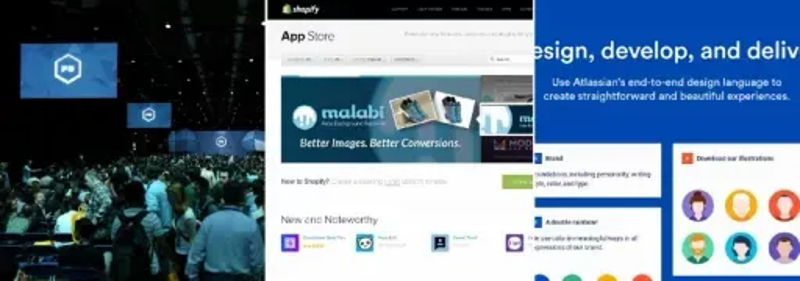
If you're serving multiple different types of consumers like developers and platform partners, through building partnership teams, hiring developer advocates, and connecting platform participants at events and strategy summits, you're probably building a platform.
If you're facilitating efficient value exchange through building and operating an app marketplace like Shopify's app store or providing contextual discovery tools, connecting 3rd party integrations and tools to the customers who need them most, you're probably building a platform.
If you're invested in building a shared set of common standards through standardised internal and external facing APIs, documentation, terminology, and “dogfooding” the programmatic surfaces that give developers and partners the ability to launch new applications natively or through a browser, you're probably building a platform.
Everything else is a product.





